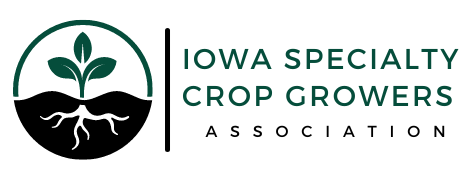Ajay Nair
Extension Commercial Horticulture Specialist
515-294-7080
nairajay@iastate.edu
As you enjoy the fruits (and veggies) of your labor after your summer harvest, keep in mind that there are still plenty of chores to be done this fall to get ready for next year’s vegetable garden. This week’s Yard and Garden entry offers tips from Ajay Nair, associate professor in horticulture and extension vegetable production specialist with Iowa State University Extension and Outreach.
When should garlic be planted?
Garlic cloves should be planted in fall (mid- to late-October to mid-November). Plant cloves 3-4 inches deep with the pointed side up. Fall-planted garlic should be mulched with a 4- to 6-inch-layer of weed-seed free straw to help prevent winter injury. In early spring, move the straw to between the rows to allow the garlic foliage to emerge.
How should I prepare my garden tools for winter?
Proper care of garden tools and equipment prolongs their life, prevents costly repairs and improves their performance. In fall, remove caked-on soil from shovels, spades, hoes and rakes with a wire brush or stiff putty knife. Wash the tools with a strong stream of water, then dry. Sharpen the blades of hoes, shovels and spades. Wipe the metal surfaces with an oily rag or spray with WD-40. Sand rough wooden handles, then wipe with linseed oil to prevent drying and cracking. Hang or store the tools in a dry location. Drain water from garden hoses. To prevent kinking, store hoses on reels or coil and place on a flat surface.
Should I clean and till my vegetable garden this fall or early next spring?
Fall cleanup and tillage provide several benefits. Many plant pathogens overwinter in the garden on plant debris such as infected leaves, stems, flowers, fruits, etc. Removal and destruction of the diseased plant debris reduces the severity of many diseases in the next growing season. Removal of the plant debris also eliminates over-wintering sites for some insects and helps reduce insect populations. Fall is also a good time to add amendments like well-rotted manure, leaves, compost and disease free garden waste. These amendments add organic matter and benefit the soil microorganisms and the overall soil health. Additionally, a fall-tilled garden dries out and warms up more quickly in spring, permitting earlier planting of cool-season crops.
How can I minimize plant disease problems in my vegetable garden next year?
Several steps can be taken to minimize disease problems in your garden next year. An important task is to clean up the garden in fall. Carefully remove and destroy the infected plant debris. Many of the fungi and bacteria that cause plant diseases survive over the winter in the dead leaves, stems and other plant parts that are left behind in the garden. The fungal spores and bacteria that survive in the garden then attack the new vegetable plants next spring. Also, annually rotate the placement of vegetables in the garden. Disease problems often increase when the same crop or crop in the same family is planted in the same area in successive years.
For crop rotation to be effective, gardeners should not plant vegetables belonging to the same plant family in the same location for a minimum of three years. Selecting vegetable varieties that are resistant to specific diseases can also be helpful.
